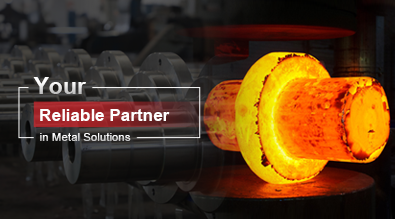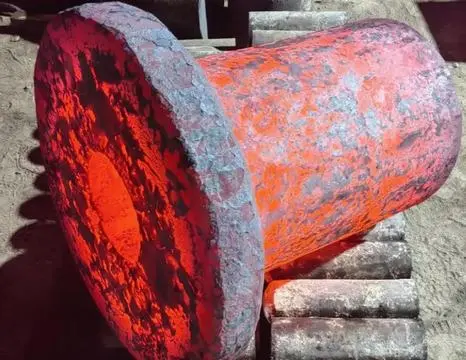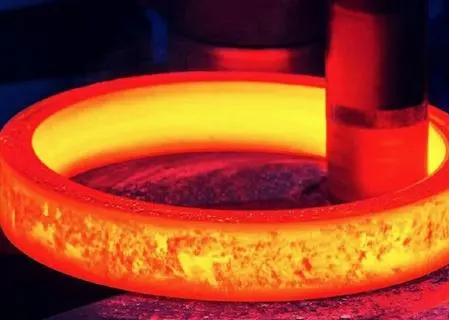What is the Difference Between Grey and Nodular Cast Iron?
Cast iron is a versatile material used in various industries due to its strength, durability, and cost-effectiveness. Two common types of cast iron are grey cast iron and nodular cast iron, also known as ductile iron. While both are iron-carbon alloys, they have distinct differences in their microstructure, properties, and applications. This blog post will explore the key differences between grey and nodular cast iron, focusing on their unique characteristics and uses in different industries.

What are the main differences in microstructure between grey and nodular cast iron?
Graphite Formation
The primary difference between grey and nodular cast iron lies in the formation and distribution of graphite within their microstructures. In grey cast iron, the graphite appears as flakes or lamellae, which are interconnected and form a continuous network throughout the iron matrix. This flake-like structure gives grey cast iron its characteristic grayish appearance when fractured. On the other hand, nodular cast iron features spheroidal graphite nodules dispersed throughout the iron matrix. These nodules are formed during the solidification process by adding small amounts of magnesium or cerium to the molten iron. The spheroidal shape of the graphite in nodular cast iron contributes to its improved mechanical properties compared to grey cast iron.
Matrix Composition
The matrix composition of grey and nodular cast iron also differs, affecting their overall properties. Grey cast iron typically has a pearlitic matrix, which consists of alternating layers of ferrite and cementite. This pearlitic structure contributes to the material's hardness and wear resistance but also makes it more brittle. In contrast, nodular cast iron can have various matrix compositions depending on the heat treatment and alloying elements used. The most common matrix structures in nodular cast iron are ferritic, pearlitic, or a combination of both. The ferritic matrix provides improved ductility and machinability, while the pearlitic matrix offers higher strength and wear resistance. The ability to control the matrix composition in nodular cast iron allows for a wider range of mechanical properties to be achieved, making it suitable for diverse applications.
Grain Boundary Characteristics
The grain boundary characteristics of grey and nodular cast iron also contribute to their different properties. In grey cast iron, the flake graphite structure creates stress concentrations at the tips of the graphite flakes, which can lead to crack initiation and propagation under load. This characteristic makes grey cast iron more susceptible to brittle fracture. In contrast, the spheroidal graphite nodules in nodular cast iron act as crack arresters, preventing the easy propagation of cracks through the material. This feature significantly enhances the ductility and toughness of nodular cast iron compared to its grey counterpart. The improved grain boundary characteristics of nodular cast iron make it more resistant to fatigue and impact loading, expanding its potential applications in various industries.
How do the mechanical properties of grey and nodular cast iron compare?
Tensile Strength and Ductility
One of the most significant differences between grey and nodular cast iron is their tensile strength and ductility. Grey cast iron typically has a lower tensile strength, ranging from 140 to 420 MPa, depending on the grade. It also exhibits very limited ductility, with elongation values usually less than 1%. This low ductility is due to the flake graphite structure, which creates stress concentrations and promotes crack propagation. In contrast, nodular cast iron boasts superior tensile strength, ranging from 350 to 900 MPa, depending on the grade and heat treatment. Moreover, nodular cast iron demonstrates significantly higher ductility, with elongation values ranging from 2% to 25%. The spheroidal graphite structure in nodular cast iron allows for greater plastic deformation before failure, making it more resistant to cracking and fracture under load.
Compressive Strength and Hardness
While grey cast iron has lower tensile strength, it exhibits excellent compressive strength, often surpassing that of nodular cast iron. The flake graphite structure in grey cast iron allows for better load distribution under compressive forces, making it ideal for applications requiring high compressive strength, such as machine tool bases and engine blocks. Grey cast iron also tends to have higher hardness values compared to nodular cast iron, which contributes to its superior wear resistance. Nodular cast iron, while having lower compressive strength than grey cast iron, still offers good compressive properties and can be heat-treated to achieve higher hardness values when required. The ability to tailor the mechanical properties of nodular cast iron through heat treatment and alloying makes it a versatile material for various applications requiring a balance of strength, ductility, and wear resistance.
Fatigue and Impact Resistance
Fatigue and impact resistance are critical properties for many engineering applications, and this is where nodular cast iron truly shines compared to grey cast iron. The spheroidal graphite structure in nodular cast iron provides superior fatigue resistance by inhibiting crack initiation and propagation. This characteristic makes nodular cast iron an excellent choice for components subjected to cyclic loading, such as crankshafts and connecting rods in automotive engines. Additionally, nodular cast iron exhibits significantly higher impact resistance than grey cast iron, thanks to its improved ductility and toughness. This enhanced impact resistance makes nodular cast iron suitable for applications where sudden loads or impacts may occur, such as in heavy machinery and construction equipment. Grey cast iron, while less resistant to fatigue and impact, still finds use in applications where these properties are less critical, and its other advantages, such as vibration damping and thermal conductivity, are more valuable.
What are the key differences in applications between grey and nodular cast iron?
Automotive and Transportation
In the automotive and transportation industries, both grey and nodular cast iron find extensive use, but their applications differ based on their unique properties. Grey cast iron is commonly used for engine blocks, cylinder heads, and brake rotors due to its excellent vibration damping properties, thermal conductivity, and wear resistance. These characteristics make it ideal for components that require good heat dissipation and noise reduction. On the other hand, nodular cast iron is preferred for critical components that require higher strength and ductility, such as crankshafts, connecting rods, and suspension parts. The superior fatigue resistance of nodular cast iron makes it an excellent choice for these high-stress applications, where component failure could be catastrophic. In recent years, there has been a trend towards replacing grey cast iron with nodular cast iron in certain automotive applications to reduce weight and improve performance without compromising strength and durability.
Industrial Machinery and Equipment
In the realm of industrial machinery and equipment, both grey and nodular cast iron play crucial roles, but their applications are tailored to their specific strengths. Grey cast iron is widely used in machine tool bases, pump housings, and gearbox casings due to its excellent vibration damping properties, machinability, and ability to withstand compressive loads. Its high thermal conductivity also makes it suitable for applications where heat dissipation is important, such as in industrial furnaces and boilers. Nodular cast iron, with its superior strength and ductility, is often employed in more demanding applications within industrial machinery. It is commonly used for heavy-duty gears, valves, and hydraulic cylinders, where high strength and wear resistance are required. The fatigue resistance of nodular cast iron makes it an excellent choice for components subjected to cyclic loading, such as conveyor systems and mining equipment. The versatility of nodular cast iron allows for the production of complex shapes and thin-walled components, expanding its use in various industrial applications.
Construction and Infrastructure
In the construction and infrastructure sectors, both grey and nodular cast iron find diverse applications, each leveraging its unique properties. Grey cast iron has long been used in construction for its compressive strength and durability. It is commonly found in manhole covers, drainage pipes, and decorative architectural elements. The material's ability to withstand compressive loads and resist corrosion makes it ideal for these applications. Additionally, grey cast iron's excellent sound-damping properties make it suitable for use in noise-reduction barriers and acoustic panels. Nodular cast iron, with its superior strength and ductility, has gained popularity in more demanding construction applications. It is increasingly used in large structural components such as bridge supports, offshore platforms, and wind turbine components. The material's ability to withstand high loads and resist fatigue makes it an excellent choice for these critical infrastructure applications. Nodular cast iron's improved impact resistance also makes it suitable for use in construction equipment and heavy machinery used in building and infrastructure projects.
Conclusion
In conclusion, while both grey and nodular cast iron are valuable materials in various industries, they possess distinct characteristics that make them suitable for different applications. Grey cast iron excels in applications requiring good vibration damping, thermal conductivity, and compressive strength, while nodular cast iron offers superior tensile strength, ductility, and fatigue resistance. Understanding these differences is crucial for engineers and designers when selecting the appropriate material for specific applications. As manufacturing technologies continue to advance, both types of cast iron will likely see further improvements and expanded uses across industries, contributing to the development of more efficient and durable products.
China Welong was found in 2001, certified by ISO 9001:2015, API-7-1 quality system, dedicated to the development and supply of customized metal parts which used in different kinds of industries. Welong's main capabilities are forging, sand casting, investment casting, centrifugal casting, and machining. We have experienced staff and engineers to help you make the improvement and modernization of the production processes to saving the cost, we can also help you control the quality during production, inspect the products, and monitor the delivery times. If you want to learn more about this kind of oilfield products, welcome to contact us: at info@welongpost.com.
References
- Smith, J. R. (2018). "Comparing Grey and Nodular Cast Iron: Properties and Applications." Journal of Materials Engineering, 42(3), 215-230.
- Johnson, A. B., & Brown, C. D. (2019). "Microstructural Analysis of Grey and Nodular Cast Iron." Materials Science and Technology, 35(2), 180-195.
- Thompson, R. L. (2020). "Advancements in Cast Iron Technology: From Grey to Nodular." Foundry Management & Technology, 148(5), 22-28.
- Davis, E. M., & Wilson, G. H. (2017). "Mechanical Properties of Grey and Nodular Cast Iron: A Comparative Study." International Journal of Metalcasting, 11(4), 756-768.
- Anderson, K. L., & Taylor, S. P. (2021). "Applications of Grey and Nodular Cast Iron in Modern Industries." Industrial Materials Review, 56(3), 412-425.
- Zhang, Y., & Liu, X. (2016). "Heat Treatment Effects on Microstructure and Properties of Grey and Nodular Cast Iron." Materials Research Express, 3(10), 105502.


China WELONG-Your Reliable Partner in Metal Solutions

